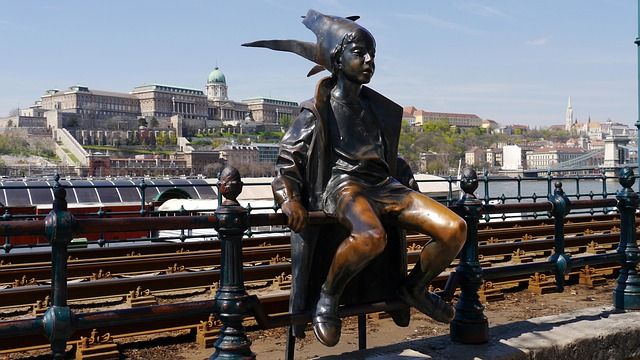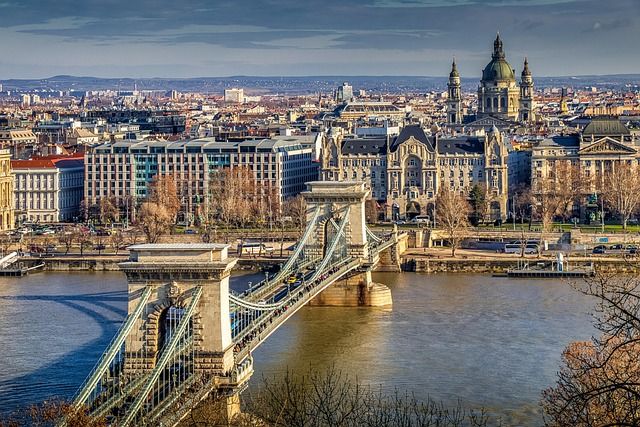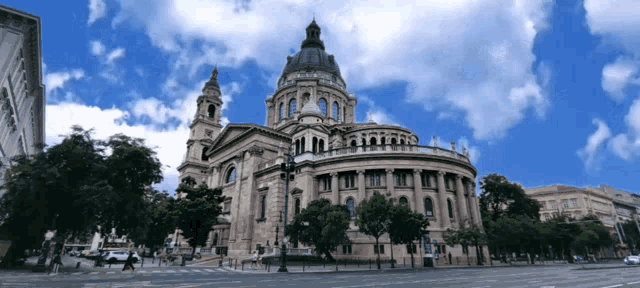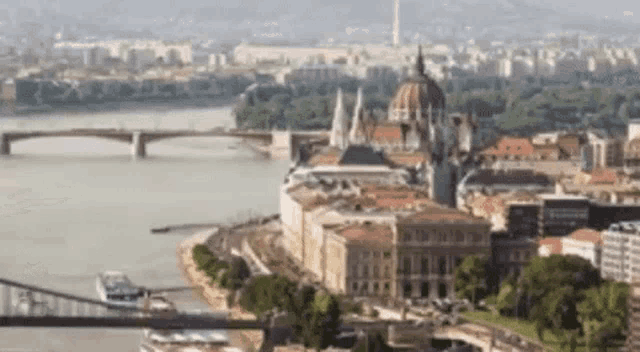
VERSIÓN ESPAÑOL:
¿Cómo va la gente de Blurt?
Les aúllo el chisme por el que seguro vienen a leer a mi cueva de meditación:
La historia de Budapest se remonta a tiempos antiguos, cuando las aguas termales de la región ya atraían a pueblos celtas mucho antes de que los romanos establecieran aquí su asentamiento, Aquincum. Este lugar se convirtió en un importante centro militar y comercial en la provincia de Panonia, con baños termales y estructuras que aún hoy pueden verse en la ciudad.
Con la caída del Imperio Romano, la región fue disputada por diferentes pueblos, hasta que los magiares llegaron en el siglo IX y establecieron el Reino de Hungría. Durante la Edad Media, Buda, en la colina occidental, se convirtió en un centro de poder con su castillo dominando el Danubio, mientras que Pest, en la llanura oriental, crecía como un centro comercial vibrante.

La historia de la ciudad tomó un giro drástico con la invasión otomana en el siglo XVI. Durante más de 150 años, Buda estuvo bajo dominio turco, dejando su huella en la arquitectura y en la cultura de los baños termales, muchos de los cuales siguen en funcionamiento hoy en día. En el siglo XVIII, los Habsburgo recuperaron la región y comenzaron un proceso de reconstrucción y desarrollo.
Pero fue en el siglo XIX cuando la transformación más significativa tuvo lugar. En 1873, las ciudades de Buda, Óbuda y Pest se unieron oficialmente, dando nacimiento a Budapest. Esta fusión coincidió con un auge económico y cultural que convirtió a la ciudad en una de las grandes capitales europeas, con la majestuosa Avenida Andrássy, el Parlamento a orillas del Danubio y el icónico Puente de las Cadenas como símbolos de su esplendor.

Caminar hoy por Budapest es recorrer siglos de historia en cada rincón. Desde las callejuelas empedradas de Buda hasta el vibrante bullicio de Pest, la ciudad sigue siendo un reflejo de su pasado imperial, su herencia otomana y su espíritu húngaro indomable.
Recorrer Budapest es sumergirse en un escenario donde la historia, la arquitectura y la cultura se entrelazan con una energía vibrante. La ciudad ofrece una de las panorámicas más impresionantes de Europa, con el majestuoso Danubio dividiéndola en dos mitades que reflejan su identidad dual: Buda, con sus colinas y su aire señorial, y Pest, con su dinamismo y modernidad.

Uno de los mayores atractivos es el Castillo de Buda, que se alza sobre la colina con vistas al río y al Parlamento. De día, el recorrido por sus calles empedradas y el Bastión de los Pescadores transporta a otra época; de noche, la ciudad iluminada se convierte en un espectáculo inolvidable. Muy cerca, el Puente de las Cadenas conecta ambas orillas con una elegancia que lo ha convertido en símbolo de Budapest.
Las aguas termales son otro de los grandes tesoros de la ciudad. Los baños Széchenyi, con sus piscinas al aire libre rodeadas de una arquitectura neobarroca, son una experiencia única, especialmente en invierno, cuando el vapor se mezcla con el aire frío. También están los baños Gellért, con su decoración art nouveau, y los Rudas, que conservan la esencia otomana.

La gastronomía húngara añade otro motivo de visita. Desde un goulash servido en un cálido restaurante hasta el emblemático kürtőskalács, un dulce cilíndrico cocido sobre brasas, los sabores de Budapest dejan huella. Para los amantes del café, los históricos cafés como el New York Café transportan a la época dorada de la ciudad.
Pero Budapest no es solo historia y tradición. La vida nocturna en ruin bars como Szimpla Kert, instalados en antiguos edificios en ruinas, muestra un lado alternativo y vibrante. Además, un paseo por la Avenida Andrássy, con sus boutiques, teatros y elegantes fachadas, evoca el esplendor de una ciudad que ha sabido reinventarse sin perder su esencia.

Desde sus imponentes edificios hasta la calidez de sus aguas termales, Budapest cautiva con una mezcla de romanticismo, historia y vitalidad que la convierte en un destino inolvidable.
La gastronomía de Budapest es un reflejo de la historia y la cultura húngara, con sabores intensos, especias profundas y platos reconfortantes que invitan a explorar la ciudad a través del paladar. El goulash es, sin duda, el plato más emblemático. A medio camino entre una sopa y un estofado, esta receta a base de carne de res, papas, pimientos y paprika es el alma de la cocina húngara. Servido en una olla humeante con pan rústico, es la opción perfecta para los días fríos.
Otra especialidad imprescindible es el pörkölt, un guiso similar al goulash pero más espeso, acompañado generalmente de nokedli, una especie de pasta fresca húngara. También está el paprikás csirke, pollo en una cremosa salsa de paprika y nata que se derrite en la boca, realzado por la simplicidad del arroz o la misma nokedli.

Para quienes buscan algo más contundente, el töltött káposzta es una opción inmejorable. Se trata de hojas de col rellenas de carne de cerdo y arroz, cocidas lentamente en una salsa de tomate y servidas con crema agria. Es un plato profundamente arraigado en la tradición húngara, especialmente en invierno y durante las festividades.
En la calle, los aromas del langos son imposibles de ignorar. Este pan frito crujiente por fuera y esponjoso por dentro se sirve con una generosa capa de crema agria y queso rallado, aunque hay versiones más modernas con embutidos, verduras o incluso dulce.

Para cerrar con un toque dulce, el kürtőskalács, también conocido como "chimney cake", es un imprescindible. Este cilindro de masa dulce se cocina a la parrilla y se espolvorea con azúcar y canela, desprendiendo un aroma irresistible. También está el somlói galuska, un postre decadente hecho con bizcocho, crema de vainilla, chocolate y nueces, que es un placer en cada cucharada.
Desde platos robustos hasta dulces irresistibles, Budapest ofrece una experiencia culinaria donde cada bocado cuenta una historia, haciendo que la comida se convierta en parte esencial del viaje.
Ya los leo más tarde.
Chau.
ENGLISH VERSION:
How's it going, Blurt folks?
I am telling you the gossip that you are surely coming to read in my meditation cave:
Budapest's history dates back to ancient times, when the region's hot springs already attracted Celtic people long before the Romans established their settlement here, Aquincum. This place became an important military and commercial centre in the province of Pannonia, with thermal baths and structures that can still be seen in the city today.
With the fall of the Roman Empire, the region was fought over by different peoples, until the Magyars arrived in the 9th century and established the Kingdom of Hungary. During the Middle Ages, Buda, on the western hill, became a centre of power with its castle overlooking the Danube, while Pest, on the eastern plain, grew as a vibrant commercial centre.

The city's history took a drastic turn with the Ottoman invasion in the 16th century. For over 150 years, Buda was under Turkish rule, leaving its mark on the architecture and the culture of the thermal baths, many of which are still in operation today. In the 18th century, the Habsburgs reclaimed the region and began a process of reconstruction and development.
But it was in the 19th century that the most significant transformation took place. In 1873, the cities of Buda, Óbuda and Pest were officially united, giving birth to Budapest. This merger coincided with an economic and cultural boom that turned the city into one of the great European capitals, with the majestic Andrássy Avenue, the Parliament on the banks of the Danube and the iconic Chain Bridge as symbols of its splendour.

Walking through Budapest today is like walking through centuries of history at every turn. From the cobbled streets of Buda to the vibrant hustle and bustle of Pest, the city remains a reflection of its imperial past, its Ottoman heritage and its indomitable Hungarian spirit.
Walking through Budapest is like immersing yourself in a setting where history, architecture and culture intertwine with vibrant energy. The city offers one of the most impressive panoramas in Europe, with the majestic Danube dividing it into two halves that reflect its dual identity: Buda, with its hills and stately air, and Pest, with its dynamism and modernity.

One of the biggest attractions is Buda Castle, which stands on the hill overlooking the river and Parliament. During the day, a walk through its cobbled streets and the Fisherman's Bastion transports you to another era; at night, the illuminated city becomes an unforgettable spectacle. Nearby, the Chain Bridge connects both banks with an elegance that has made it a symbol of Budapest.
The thermal waters are another of the city's great treasures. The Széchenyi baths, with their open-air pools surrounded by neo-baroque architecture, are a unique experience, especially in winter, when the steam mixes with the cold air. There are also the Gellért baths, with their art nouveau decoration, and the Rudas, which preserve the Ottoman essence.

Hungarian cuisine adds another reason to visit. From goulash served in a warm restaurant to the iconic kürtőskalács, a cylindrical sweet cooked over embers, the flavours of Budapest leave their mark. For coffee lovers, historic cafés such as the New York Café transport you back to the city's golden age.
But Budapest is not just history and tradition. The nightlife in ruin bars such as Szimpla Kert, housed in old ruined buildings, shows an alternative and vibrant side. In addition, a walk along Andrássy Avenue, with its boutiques, theatres and elegant facades, evokes the splendour of a city that has managed to reinvent itself without losing its essence.

From its imposing buildings to the warmth of its thermal waters, Budapest captivates with a mix of romance, history and vitality that makes it an unforgettable destination.
Budapest's gastronomy is a reflection of Hungarian history and culture, with intense flavours, deep spices and comforting dishes that invite you to explore the city through your palate. Goulash is undoubtedly the most emblematic dish. Halfway between a soup and a stew, this recipe based on beef, potatoes, peppers and paprika is the soul of Hungarian cuisine. Served in a steaming pot with rustic bread, it is the perfect option for cold days.
Another must-try speciality is pörkölt, a stew similar to goulash but thicker, usually accompanied by nokedli, a kind of fresh Hungarian pasta. There is also paprikás csirke, chicken in a creamy paprika and cream sauce that melts in your mouth, enhanced by the simplicity of the rice or nokedli itself.

For those looking for something more substantial, töltött káposzta is an unbeatable choice. These are cabbage leaves stuffed with pork and rice, slowly cooked in a tomato sauce and served with sour cream. It is a dish deeply rooted in Hungarian tradition, especially in winter and during the holidays.
On the street, the aromas of langos are impossible to ignore. This fried bread, crispy on the outside and fluffy on the inside, is served with a generous layer of sour cream and grated cheese, although there are more modern versions with sausages, vegetables or even sweet.

To finish on a sweet note, kürtőskalács, also known as chimney cake, is a must-try. This cylinder of sweet dough is grilled and sprinkled with sugar and cinnamon, giving off an irresistible aroma. There is also somlói galuska, a decadent dessert made with sponge cake, vanilla cream, chocolate and nuts, which is a pleasure in every spoonful.
From robust dishes to irresistible sweets, Budapest offers a culinary experience where every bite tells a story, making food an essential part of the trip.

Hello @paulindstrom! 🎉
Congratulations! Your post has caught the attention of the curator @baiboua from the Blurt LifeStyle community and has received our support. 🌟
We appreciate your contribution to the community and look forward to seeing more of your amazing content! Keep sharing your experiences and inspiring others. 🚀✨